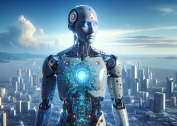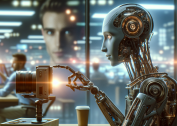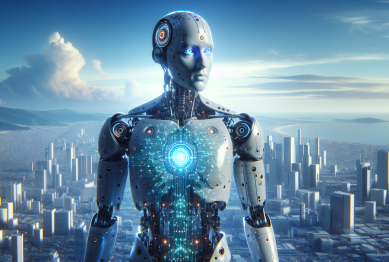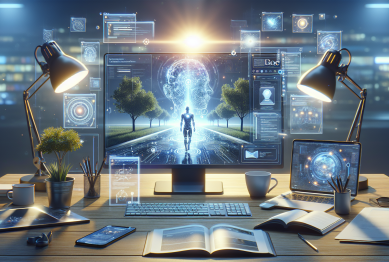Discover how artificial intelligence is quietly revolutionizing daily experiences, from smart assistants to healthcare. This guide takes you inside the evolving world of AI technology, revealing what’s shaping this innovation and what it means for you.
Understanding Artificial Intelligence Technology
Artificial intelligence, often shortened to AI, stands at the forefront of modern technological advancement. It refers to the simulation of human-like intelligence by computer systems, enabling machines to learn, solve problems, and make decisions. While science fiction once painted AI as a distant dream, today, the technology quietly powers many aspects of digital life, from personalized recommendations on streaming platforms to automated customer service chats. Fascination with AI continues to grow as its capabilities expand and touch areas ranging from finance to education.
One main driver behind artificial intelligence adoption is machine learning. This subset of AI allows software to improve through experience, feeding on data to make better predictions over time. Deep learning, a further development, involves layered neural networks that mimic the human brain in processing information. This is the reason computers now recognize faces in photos, translate languages instantly, or spot fraud in real-time—a true transformation for users and organizations alike. The result is smarter systems that serve both business and personal needs.
As AI systems become more sophisticated, questions emerge about transparency, reliability, and the ethical use of data. Yet the potential remains impressive. In research labs and startup garages alike, teams investigate new uses for AI: from boosting productivity to combating climate change. Understanding where AI comes from, how it evolves, and the challenges it faces is crucial for making the most of this technology. It’s a journey that continually redefines what’s possible in tech and science.
AI at Home: Smart Assistants and Connected Living
Smart home technology brings the power of artificial intelligence into living spaces. Voice-activated assistants, like those embedded in speakers, have become common for managing daily routines. Whether issuing calendar reminders, playing music, or controlling lights, these AI-driven devices respond to natural language and grow more personalized over time. They learn user habits, recognize voices, and even adjust to preferences—transforming how comfort and convenience are delivered at home.
In the broader smart home ecosystem, AI integrates with other technologies such as thermostats, security cameras, and appliances. By analyzing patterns and automating tasks, connected systems can optimize energy usage, bolster home safety, and streamline chores. For example, AI-powered video surveillance distinguishes between familiar faces and strangers, alerting residents to unusual activity. Temperature control adjusts proactively based on weather forecasts and occupancy patterns. These innovations balance privacy and efficiency, supporting both peace of mind and sustainability.
Accessibility is another layer where AI shines. Voice-enabled commands break barriers for those with limited mobility or vision, providing hands-free interaction through natural speech. Users can order groceries, schedule appointments, or receive news updates without lifting a finger. Such capabilities demonstrate the ongoing impact of artificial intelligence on daily life—creating smarter, more accessible environments for everyone.
Artificial Intelligence in Healthcare Solutions
Healthcare sees some of the most promising AI-driven advancements. Sophisticated algorithms process vast streams of medical data to uncover insights and assist clinicians in early diagnosis. Medical imaging, for instance, benefits from AI’s capacity to detect subtle patterns invisible to the naked eye. Through deep learning, systems interpret MRI scans, X-rays, and pathology slides more rapidly and, in some cases, with similar accuracy to expert doctors. This can mean quicker, more precise detection and a path toward improved patient outcomes.
Another key area involves predictive analytics, where AI assesses risk factors in patient histories to support preventive care. By sifting through electronic medical records and genetics, AI models estimate likelihoods of conditions such as diabetes or heart disease, allowing for early intervention. This personalized medicine approach enables targeted advice and treatment, tailored specifically to an individual’s needs. For overburdened healthcare systems, AI offers support in managing resources and optimizing workflows, ultimately benefiting both caregivers and patients.
Remote monitoring and virtual consultations also gain traction with the help of artificial intelligence. Smart wearables and medical devices gather real-time health data, which AI systems interpret to alert users and practitioners to trends or anomalies. This empowers individuals to manage their health proactively, even outside the traditional doctor’s office. With new developments, AI-driven healthcare continues to inch closer to more responsive and efficient care for people everywhere.
How Artificial Intelligence Shapes Modern Workplaces
Workplace transformation through AI is well underway, quietly changing how organizations operate. Intelligent automation now handles repetitive, data-heavy tasks, freeing up human employees to focus on creative and strategic work. Whether organizing inventory, scheduling meetings, or sorting email, machine learning algorithms streamline efficiency, minimize errors, and save time. For many, embracing AI has resulted in greater productivity and more agile business operations.
Concerns about job automation are valid; however, studies show that artificial intelligence frequently augments human skills rather than outright replacing them. New opportunities arise for workers to retrain and upskill, focusing on collaboration, problem-solving, and leadership skills that machines can’t easily emulate. Employers increasingly value digital literacy, making education in AI and data science an advantage. By blending human intuition with machine-powered analytics, businesses generate insights that drive better decision-making and foster innovation.
Collaboration tools now weave AI into daily work—automated transcription, smart suggestions, and advanced analytics all support digital workflows. In customer service, AI-driven chatbots provide instant responses, resolving routine queries while escalating complex issues to human agents. The future of work is not simply automated, but reimagined: powered by intelligent systems that adapt to user needs and empower teams to achieve more, together.
Tackling Challenges in Artificial Intelligence Development
Building advanced artificial intelligence comes with hurdles. One significant challenge is ensuring algorithmic fairness and avoiding bias in data. When AI systems are trained on unbalanced or skewed datasets, their recommendations or predictions can mirror existing social inequalities. Addressing these issues requires transparency in development practices and diversification of input data. Researchers and policymakers are working to set guidelines that keep AI equitable and trustworthy for all.
Data privacy and security remain paramount as AI’s appetite for information grows. Safeguarding sensitive details, whether in smart homes or healthcare settings, is essential to earn user trust. Companies developing AI solutions operate under increasing scrutiny and must comply with regulations safeguarding consumer rights. Encryption, anonymization, and transparent data practices are crucial for ensuring privacy without compromising innovation. Open dialogue between tech leaders and communities helps address concerns head-on.
Transparency is just as important when explaining how AI systems arrive at their results. Some advanced algorithms lack interpretability, making it hard to understand their decision-making process. This “black box” problem prompts developers to create explainable AI, where human users can trace logic and validate outputs. As artificial intelligence becomes more woven into the fabric of daily life, ongoing efforts to improve understanding, security, and equity keep progress in line with social values.
The Future Impact of Artificial Intelligence
Looking ahead, artificial intelligence appears set to become even more integral to technology ecosystems. It will influence sectors from energy management to personalized learning plans in education. AI’s potential to analyze environmental data could support smarter resource allocation and more effective responses to climate challenges. In entertainment, creative AI programs already compose music, generate artwork, and write stories, pushing the boundaries of human-machine collaboration and sparking new cultural phenomena.
Societal adoption rests on the ongoing expansion of accessible AI education and transparent governance. Open online courses, industry partnerships, and public awareness initiatives make it easier for people to learn about AI systems and harness their power responsibly. Engaging a diverse range of voices in AI development not only prevents bias, but also encourages solutions that reflect a global society. The call for ethical guidelines reminds us that technological progress must align with human interests.
The ultimate promise of artificial intelligence lies in its capacity to enhance what people do best—solving problems, thinking creatively, and building connections. As this technology continues unfolding, the lessons learned today pave the way for breakthroughs tomorrow. Staying informed, staying curious, and embracing responsible innovation will shape whatever comes next in the ever-changing world of AI.
References
1. Russell, S., & Norvig, P. (2021). Artificial Intelligence: A Modern Approach. Retrieved from https://www.pearson.com/en-us/subject-catalog/p/artificial-intelligence-a-modern-approach/P200000004883/9780134610993
2. National Institute of Standards and Technology. (2023). AI Risk Management Framework. Retrieved from https://www.nist.gov/itl/ai-risk-management-framework
3. European Commission. (2023). Ethics guidelines for trustworthy AI. Retrieved from https://digital-strategy.ec.europa.eu/en/library/ethics-guidelines-trustworthy-ai
4. Johns Hopkins Medicine. (2021). Artificial Intelligence in Health Care. Retrieved from https://www.hopkinsmedicine.org/health/wellness-and-prevention/artificial-intelligence-in-health-care
5. Harvard University. (2023). The Future of Artificial Intelligence. Retrieved from https://seas.harvard.edu/news/2023/10/future-artificial-intelligence
6. UNESCO. (2023). Artificial Intelligence. Retrieved from https://en.unesco.org/artificial-intelligence









